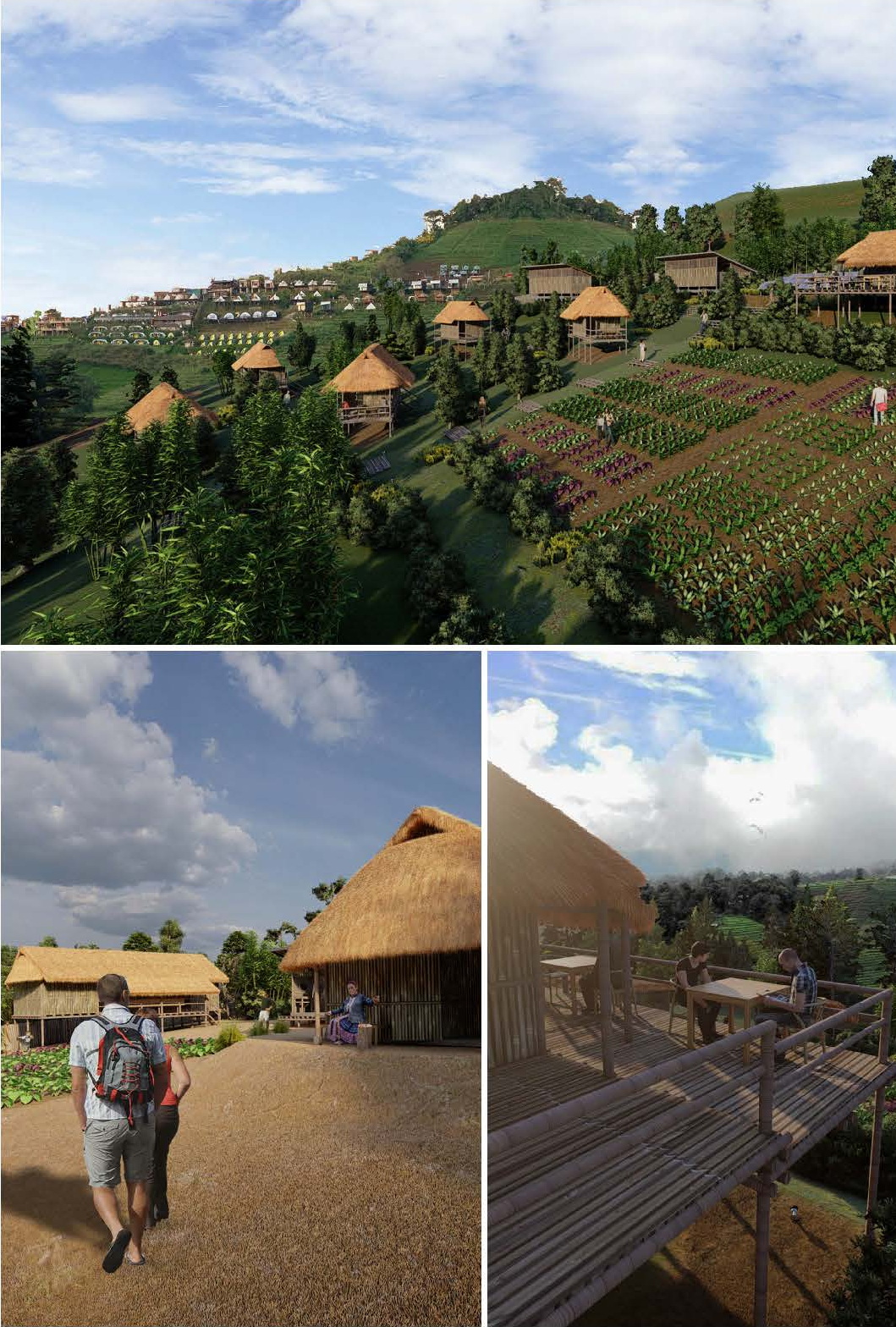Building transformation in the forest area context: a case study of Moncham, Maerim district, Chiang Mai province
Keywords:
ecosystem, camping resort, ecotourism, agro-tourismAbstract
This research aimed to present a study on construction and context in the area of the case study to propose a guideline for making a change to buildings to be consistent with the environment and ecosystem in forest areas. The case study area is Mon Cham, Mae Raem sub-district, Mae Rim district, Chiang Mai province. The scope of the study is investigating areas in the project for constructing camping resorts around Mon Cham and community areas of the Hmong hill tribe, Nong Hoi Kao village in terms of environmental and ecosystem problems caused by the rapid expansion of ecotourism. Data were collected from groups of the sample such as ecotourists, tourism community enterprises, officers of Royal Project Development Center, and forestry senior officers. The research instruments are questionnaires, structured interviews, and on-site observations. Which were analyzed and designed to become an architectural prototype for assessing results by experts. The study results found that the main factors of changing buildings to be consistent with the ecosystem in the case study area could be classified into 3 parts; (1) temporary buildings that can be easily installed and removed, using materials with low greenhouse gas emission, which can be found in nearby areas, (2) layout of low-density buildings in which the number of buildings is controlled (3) appropriate Infrastructure with good accessibilities. There are suggestions about studying in-depth information of ecological architectures adding to local people and tourists. Besides, the promotion of agro-tourism activity models and increasing the quality of hospitality
services is due to reducing the number of building for reforestation.
References
Chettamas, S. (2003). Karn borihan chatkarn phuentee anurak lae karn anurak khwam laklai thang chiwaphap. (In Thai) [Conservation area management and biodiversity conservation] (Master’s thesis). Bangkok: Kasetsart University.
Google Earth. (2021). Aerial photograph at Moncham. Retrieved January 27, 2021, from http://maps.google.com
Horayangkura, W. (2015). Karn chattham railaiat khrong karn ngan sathapattayakam. (In Thai) [Architectural programming for the creation of built environment]. Bangkok: G.B.P Centre Company Limited.
Pinkaew, K. (2013). Karn thongthiao choeng watthanatham. (In Thai) [Cultural tourism]. Retrieved February 20, 2021, from http://tourism-dan1.blogspot.com/
Sasong, S. (2010). Khwamchuea nai chumchon nai sun phatthana khrongkarn luang Nong Hoi, tambon Mae Raem, amphoe Mae Rim, changwat Chiang Mai. (In Thai) [The beliefs in community at the Nong Hoi Royal Project Development Center, Mae Raem sub-district, Mae Rim district, Chiang Mai province] (Master’s thesis). Chiang Mai: Chang Mai Rajabhat University.
Thai Appraisal and Estate Agents Foundation. (2021). Rakha pramoen karn kosang. (In Thai) [Construction cost estimation]. Retrieved April 6, 2021, from http://www.thaiappr aisal.org/
Thailand Greenhouse Gas Management Organization. (2011). Neawtangg karn pramoen carbon fut phrin khong phalittaphan. (In Thai) [Carbon label project]. PathumThani: Amarin Printing and Publishing Public Company Limited.
Thailand Institute of Scientific and Technological Research. (1996). Laeng thongthiao choeng ni wet. (In Thai) [Eco-tourism destination]. Retrieved December 16, 2020, from http://std.kku.ac.th/4830801696/nor1/index2.htm
Thailand Institute of Scientific and Technological Research. (1996). Karn thongthiao choeng anurak. (In Thai) [Ecotourism]. Retrieved December 17, 2020, from https://www.dnp.go.th/park/sara/tour/eco.htm
Tourism Authority of Thailand. (1996). Chonphao Hmong. (In Thai) [Hmong Tribe]. Retrieved March 16, 2021, from http://www.sawadee.co.th/thailand/hilltribes/

Downloads
Published
Issue
Section
License
Copyright (c) 2022 Faculty of Architecture, Chiang Mai University

This work is licensed under a Creative Commons Attribution-NonCommercial-NoDerivatives 4.0 International License.


